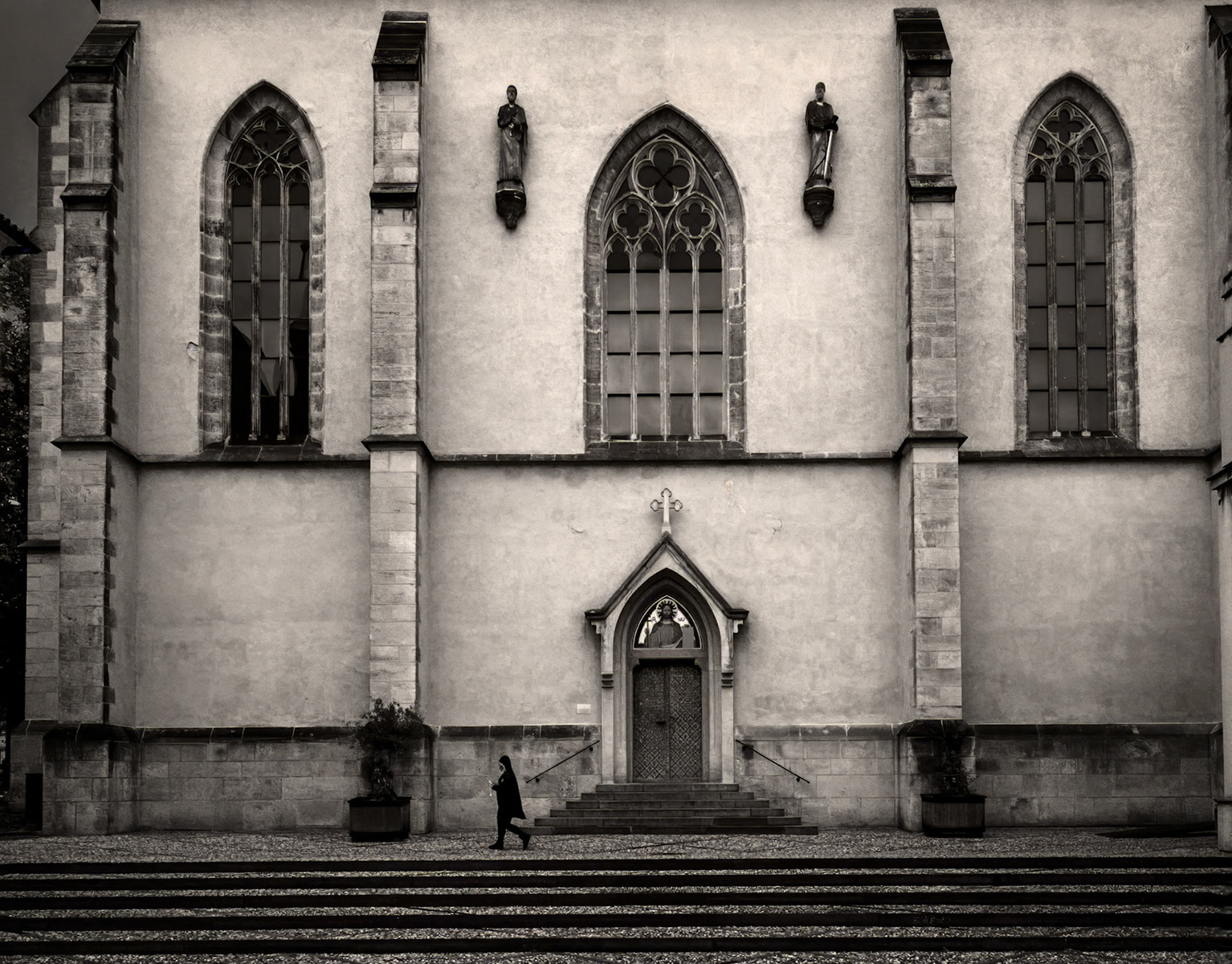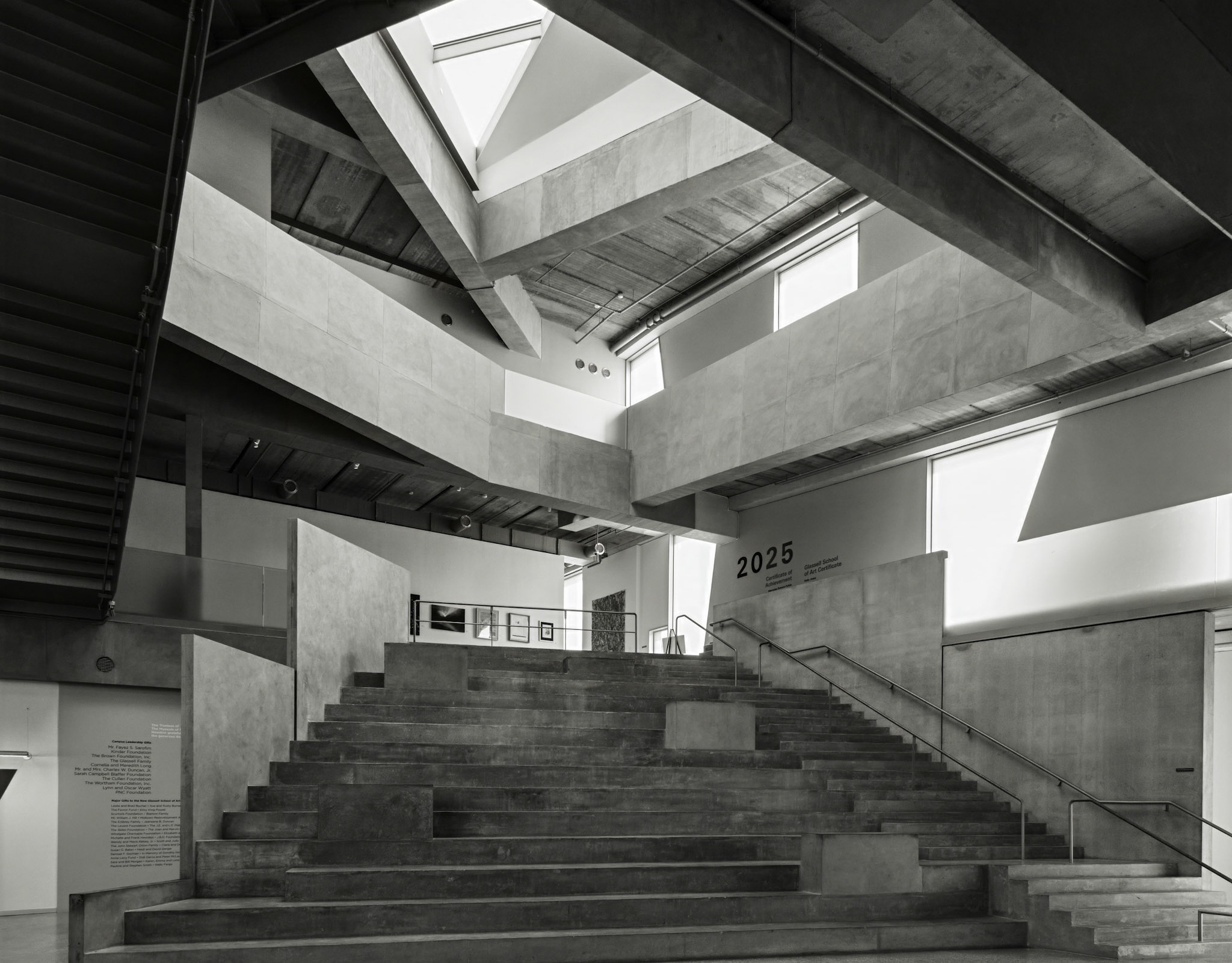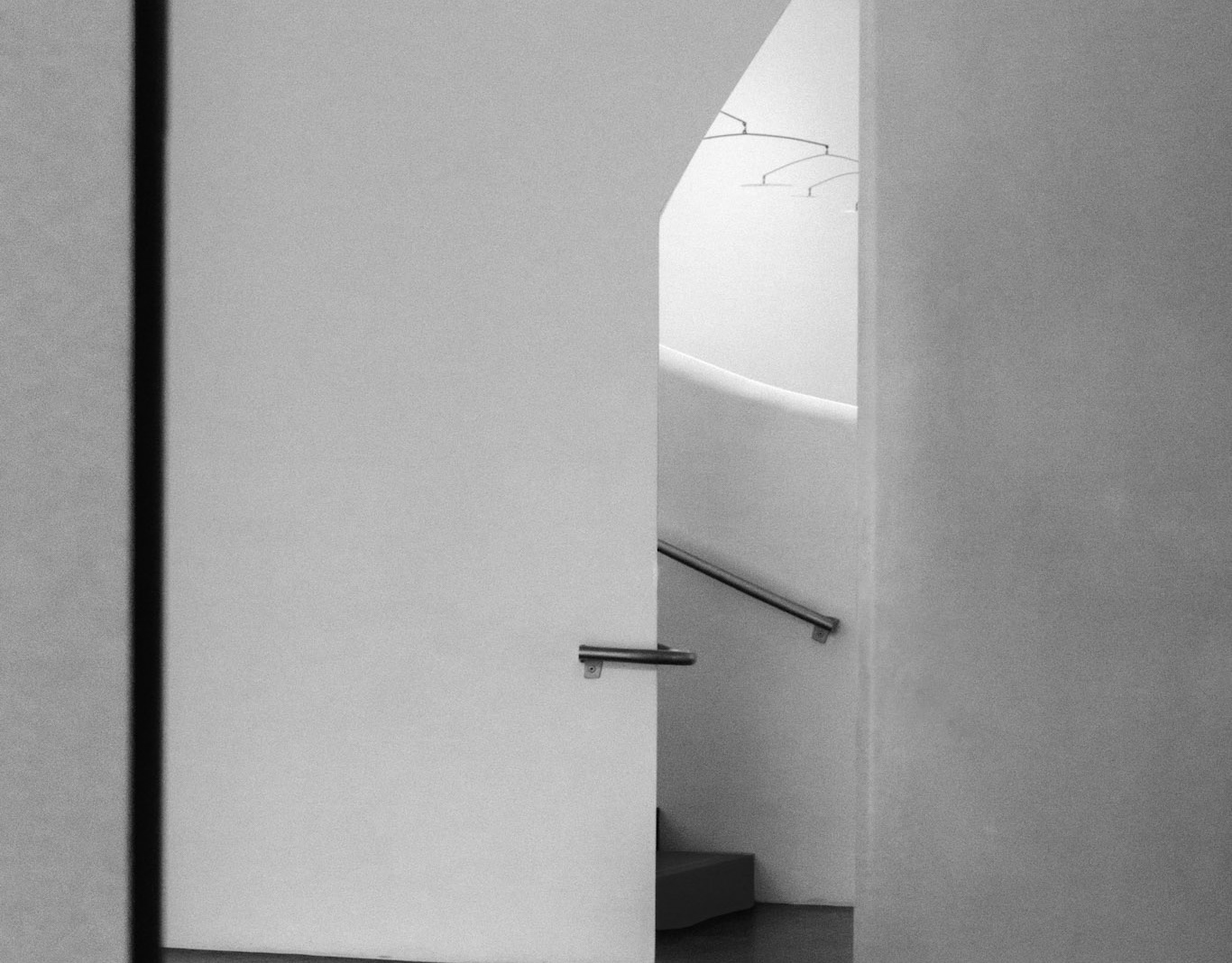Cemetery art seems to follow strict but unwritten rules. These rules make the remembrance all about grief, religion, and often how successful they were. As a result, all cemeteries have a certain sameness, robbing the deceased of any individuality or recognition of what they were like as a person. How could their memorial differentiate them as a person, not their status, from everyone else? This is where a visual epitaph comes in.
In recent visits to Glenwood Cemetery in Houston, Texas, I discovered graves that didn’t look conventional; they flouted the rules. There was no “cemetery art” or religious symbolism. There was, however, true art used in a way the really represented who these people were and made me want to learn their story, a true visual epitaph.
In recent visits to Glenwood Cemetery in Houston, Texas, I discovered graves that didn’t look conventional; they flouted the rules. There was no “cemetery art” or religious symbolism. There was, however, true art used in a way the really represented who these people were and made me want to learn their story, a true visual epitaph.
Dr. Allen George Heard (1882 – 1926) and Dr. Ethel Lyon Heard (1877 – 1933) both served in France in World War I. Dr. Allen was wounded twice and decorated. Dr. Ethel ran a maternity hospital. They adopted an orphaned French boy. When Dr. George died, Dr. Ethel brought French artist Marcel Bouraine’s stone sculpture “Solitude in Caen” to serve as their burial monument. The sculpture depicts France’s grief at the ravages of World War I. To me it seems a fitting representation of the two doctors, given their life of service and compassion, and their connection to France.
The black square, gray triangle, and the white circle of the Keeland grave simply stand out from all the graves surrounding it. It’s clearly something different. Something modern and something very graphical. This is the grave of Burdette Watts Keeland, Jr. (1926 – 2000), his wife Margaret Campbell Scott Keeland (1926 – 2008), and their granddaughter Katherine Burdette Jones Henderson (1988 – 2018). The Glenwood Cemetery list of Notable Interred describes Keeland as “Architect who became interested in cemetery design in the 1960s and spent the rest of his life studying and documenting cemeteries around the world. He designed his own strikingly modern monument.”
I had seen the grave of Anne Cox Koehler (1954 – 2006) many times in the years I’ve been visiting Glenwood. However, I never photographed it until my last visit. I couldn’t understand what her monument was about. Why would someone use that as a headstone? It just seemed out of place. Koehler was a longtime patron of the Museum of Fine Arts Houston (MFAH) where she served both as a docent and President of the Museum Guild. To honor Koehler, her husband commissioned sculptor Joseph Havel to create a sculpture for her grave. This sculpture is entitled “Knotted Sheet (for Anne)“. It’s a fitting monument to her life and continues her passion of promoting art.
For more information go to https://mikeschaffnerphotography.com/visual-epitaph/
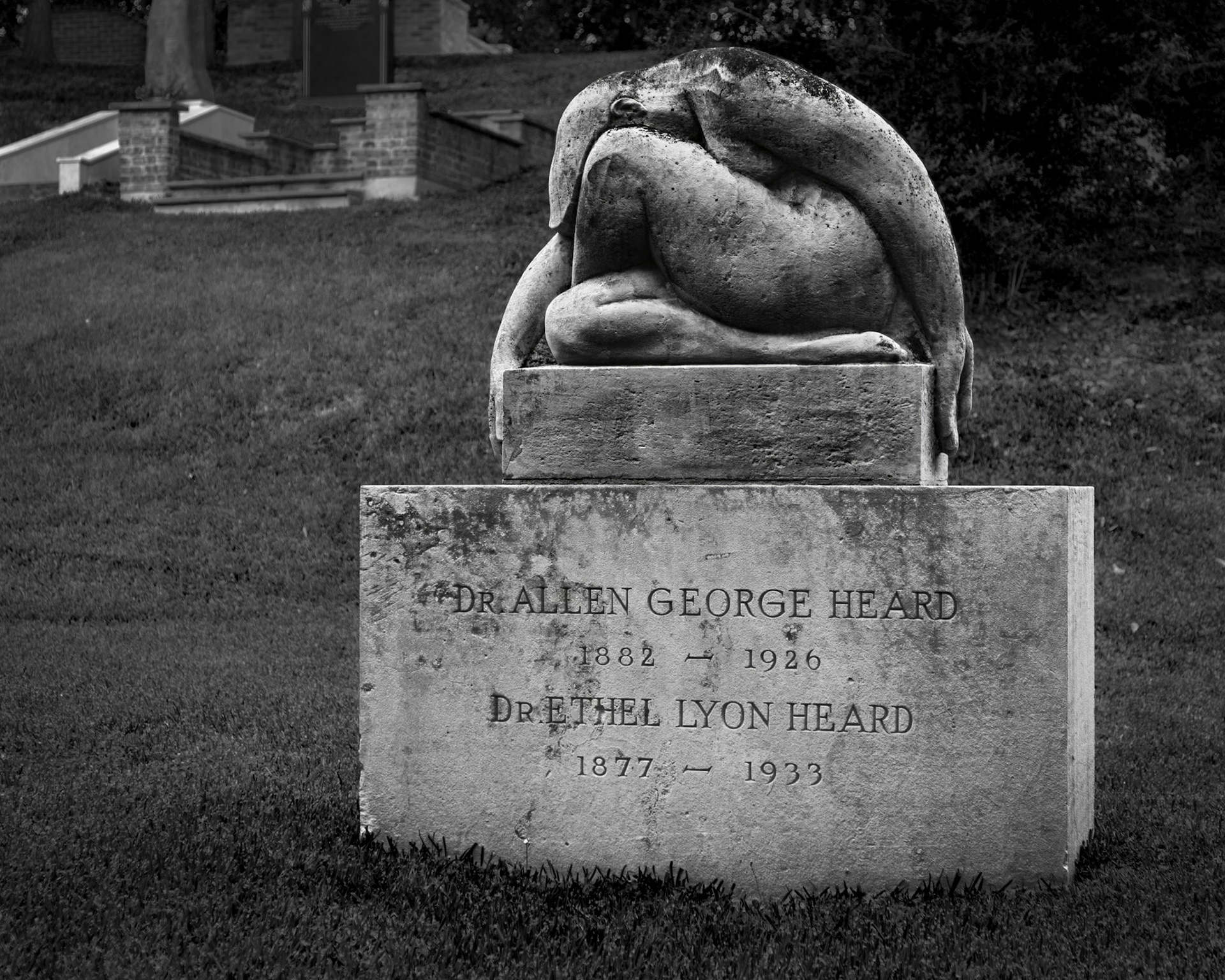
Drs. Heard
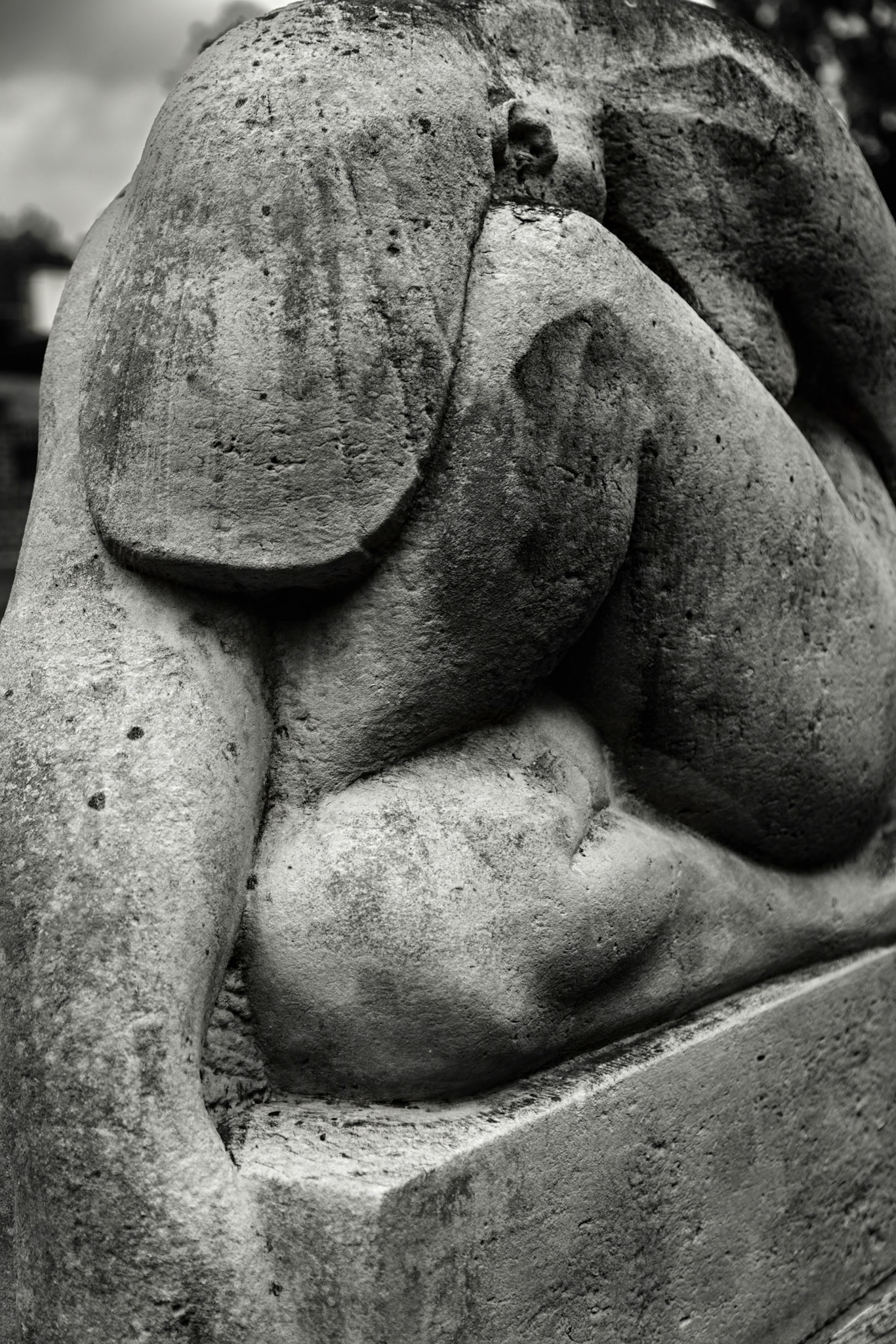
Solitude In Caen
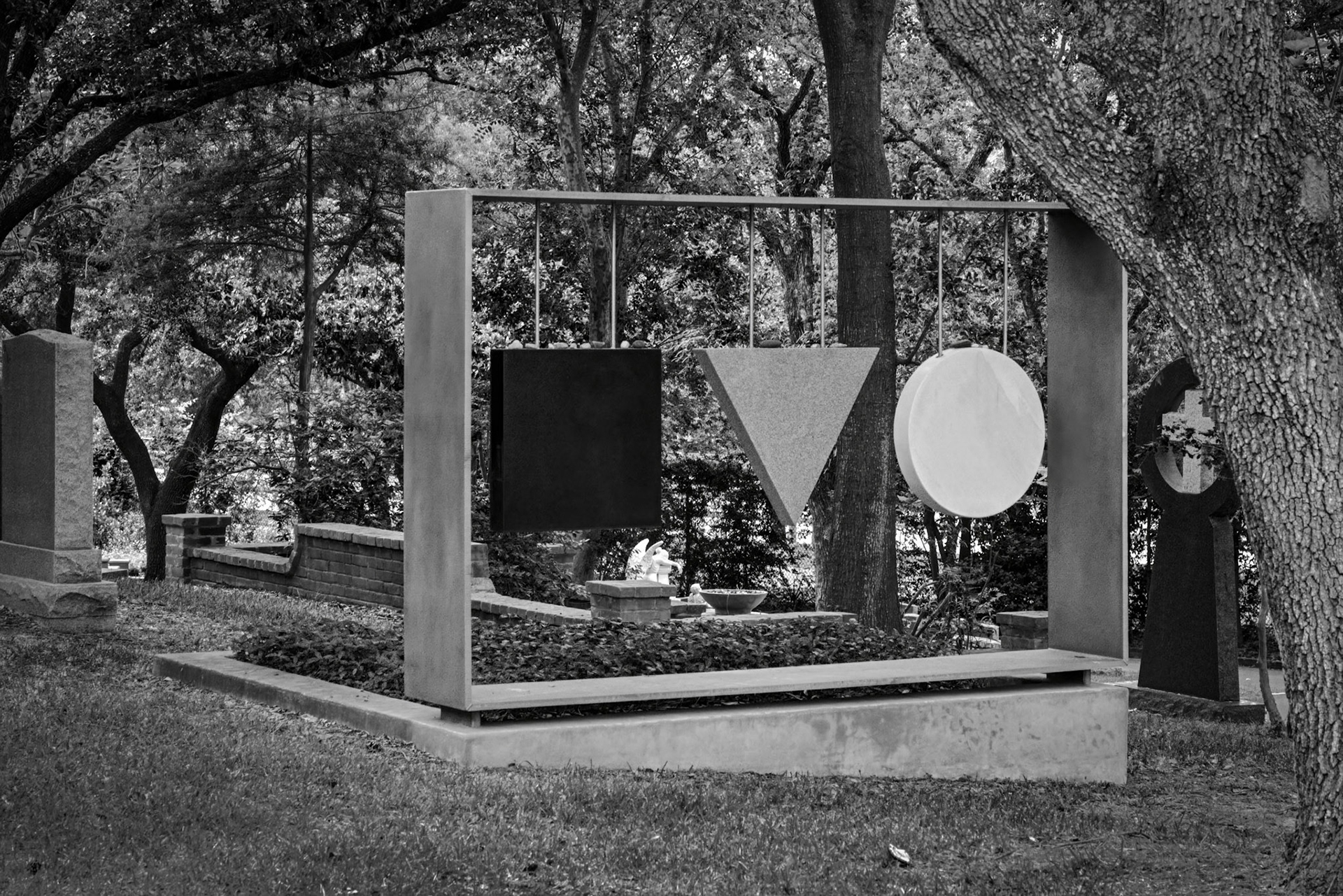
Graphic Symbols
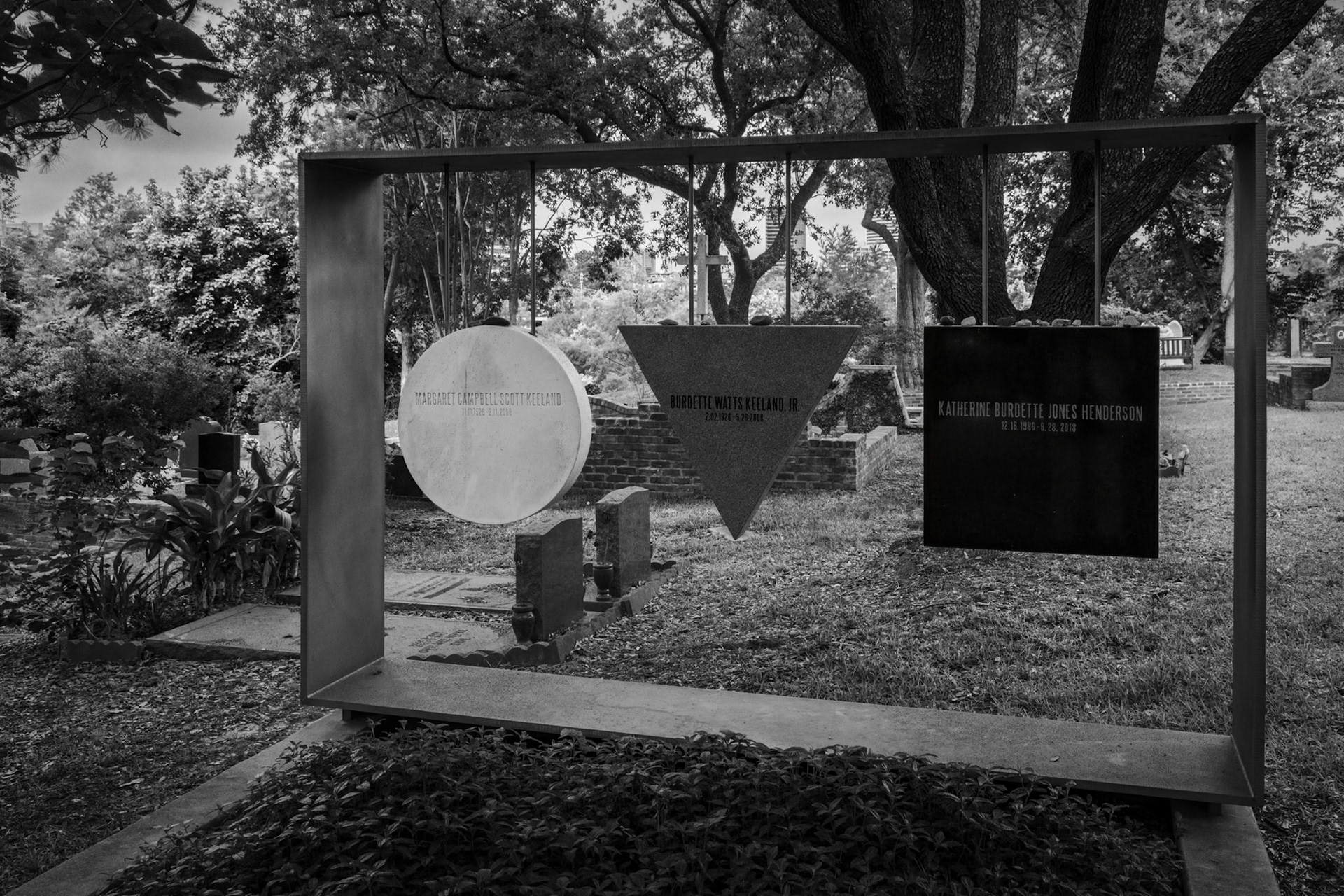
Modernist Rebel


